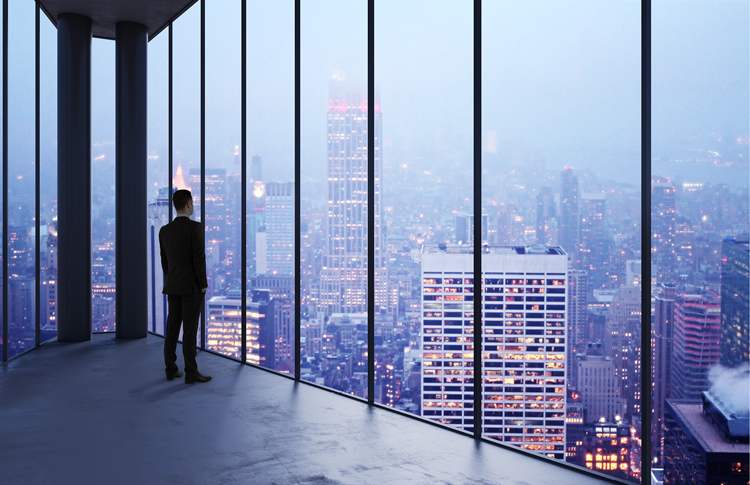
Even as the pandemic begins to wind down across the world, legal services are increasingly being delivered virtually. Law firms have started to bring employees back into the office, but it is clear that there is no going back to the pre-COVID days.
Having experienced WFH, lawyers have found remote working can be just as productive, if not more, as being in the office. A recent poll of practitioners in London by legal recruitment firm Major, Lindsey & Africa found that women partners, and junior lawyers of all genders, are not enamoured by the idea of having to return to the office full-time.
This transition to hybrid working has posed one important question for law firm leaders: Where, then, does that leave the traditional office?
Kristian Jones, the Singapore-based principal of design in Asia at Unispace, says a great revaluation is taking place as firms around the world see their employees in the office far less frequently.
“This has raised the question as to whether dedicated workstations and cubicles found in legal offices remain the most optimal use of space, given that many now remain unused for some part of the workday,” he says.
As a result, flexibility is a “key tenet” that law firms are prioritising while they shift work styles and adapt their office spaces, says Jones.
Experience-based working — where employees go to the office for specific types of work has emerged as a “potential candidate for the prototypical law firm of the future,” he suggests. For companies, this means “implementing a diverse range of settings that employees can do their best work in, ranging from quiet focus areas for individual assignments to larger social spaces that encourage collaboration, innovation, and creativity.”
While firms consider how to better utilise space and maximise days spent in the office, there is a movement from “single-use to multifunctional spaces.”
“In the legal sphere, these include virtual hearing rooms (supported with high-quality AV solutions) that can fulfil court, client-facing and media broad-cast purposes, bookable war rooms for collaboration and focused case preparation, spaces that foster greater staff wellbeing and sustainability, as well as hospitality-focused spaces that can be rapidly transformed into event-ready zones,” Jones says.
More recently, legal clients are reevaluating how different practice groups work together at the workplace, says Jones, observing a “gradual movement away from siloed groups to more holistic teams, with different practice groups working collaboratively on industry and client-based solutions.”
“This informs how we look at planning and flexibility, and how workspaces can support current and future needs as business headcounts or working styles evolve,” he adds.
As law firms encompass both collaborative and private aspects of work and ingrained processes, spaces must be carefully incorporate these needs into the overall design.
“As a legacy industry, law and legal work have upheld long-standing traditions around ways of working, and this also extends to configurations of the physical office. One key concern around legal offices relates to privacy. Typically, while large boardrooms and meeting spaces are a mainstay for law firms, dedicated rooms for external meetings must be in place, to preserve client confidentiality. Simultaneously, due to the nature of legal work, the abundance of sensitive case-related documents also requires secure storage space. Both of these aspects thus require the usage of individual closed-door spaces, which may prove challenging when considering aspects of workplace design such as open floor plans and social spaces,” Jones says.
Additionally, beyond such concerns, law firm layouts are also bound by industry perceptions of the workplace.
“Large corner offices are seen as prominent symbols of success and seniority, and there remains some difficulty in convincing established lawyers in top firms to exchange these for open office and hot-desking structures,” says Jones.
Designing for law firm clients pre- and post-pandemic is a marked difference, says Jones, noting that over the past months, discussions with clients in the legal industry revealed two major areas in their planned workplace transformation — talent management and innovation.
“Talent attraction and retention have emerged as key issues post-pandemic,” says Jones, adding that 87 percent of participants in a Unispace survey agreed a workplace refurbishment could have a positive impact on the attraction of talent.
“Subsequently, law and legal-related firms, such as start-ups in the legal-tech space, are beginning to implement changes to meet shifts in their employees’ priorities, including increased social spaces, and larger town-hall spots that can be used for employee announcements and communication – all of which reflect the changing priorities of employees post-pandemic,” he says.
Additionally, spaces designed for law firms and corporates increasingly emphasize on brand.
“There is now greater focus on the brand experience, and how companies value staff and guests’ time when they come to the office — gone are the days of the prominent marble reception counters to convey trust and status as people arrive,” he says.
Now, the firm works more closely with clients to understand different user-profiles and their expectations, “and how signature touchpoints can be used to elevate the experience journey and create a unique sense of brand.”
“These touchpoints can make journeys more seamless and convenient, such as a concierge or booking platform, or could take the form of high-touch memorable moments — such as a curated hospitality offer,” Jones says.